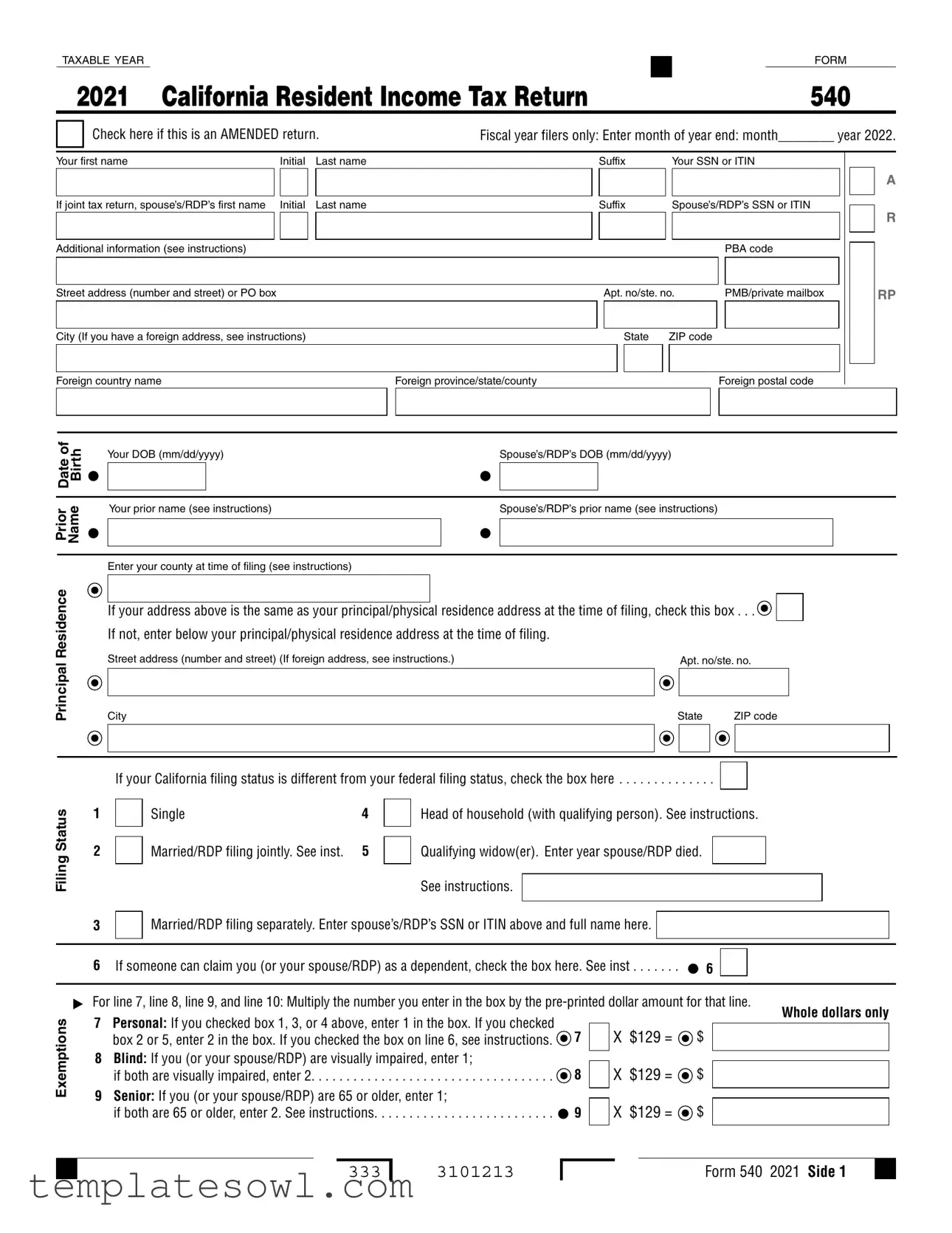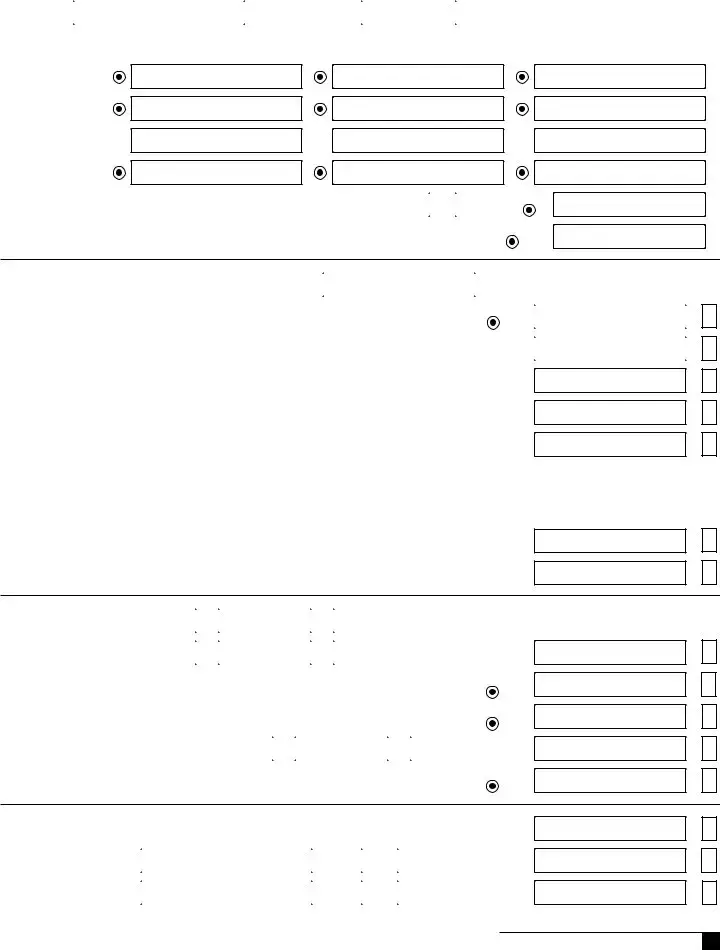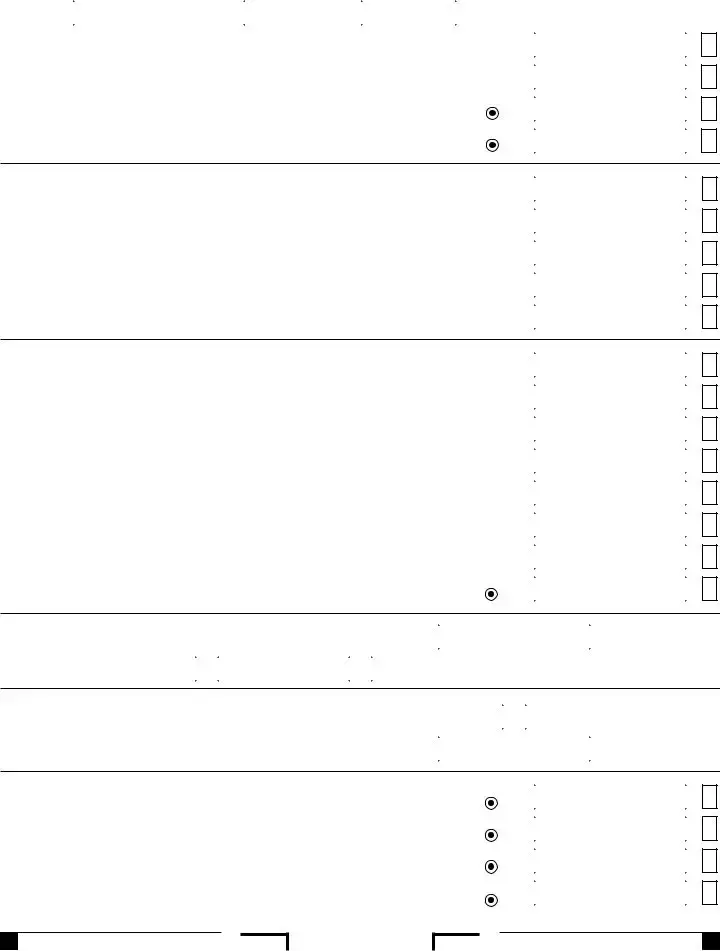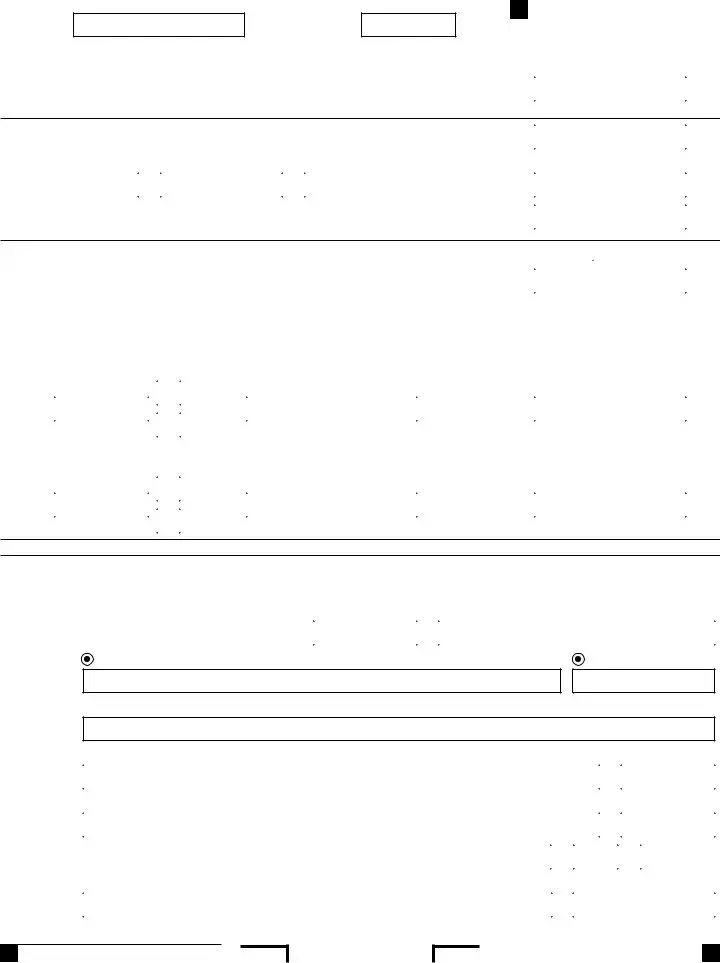What is the CA 540 form?
The CA 540 form is the California Resident Income Tax Return for individuals. It is used by residents of California to report their income and calculate their state tax obligations. This form encompasses a variety of sections where taxpayers input personal information, income details, exemptions, deductions, and credits. It is essential for accurately assessing the amount owed or the refund due for the tax year.
Who must file the CA 540 form?
Individuals who are considered residents of California and earn income during the tax year must file the CA 540 form. This includes those earning wages, salaries, and self-employment income, as well as interest, dividends, and other forms of income. If you have a spouse and file jointly, you must also include your spouse's income. Additionally, if you are claimed as a dependent by someone else, specific conditions may affect your filing requirements.
What information is needed to complete the CA 540 form?
To complete the CA 540 form, taxpayers will need personal identification details, such as their Social Security Number (SSN) or Individual Taxpayer Identification Number (ITIN). Additionally, information regarding income from various sources, including W-2 forms and other income statements, is required. Taxpayers also need to provide details about exemptions, deductions—such as standard or itemized deductions—and any applicable credits. It is advisable to have all relevant tax documents on hand before starting the form.
What are exemptions, and how do they affect my tax return?
Exemptions reduce your taxable income, which consequently lowers your overall tax liability. The CA 540 form allows for various exemptions based on personal and dependent status. Generally, each exemption equates to a set dollar amount that decreases your taxable earnings. For example, you may claim exemptions for yourself, your spouse, or dependents. Accurately listing exemptions is crucial for optimizing your tax return outcome.
How do I determine my filing status?
Your filing status is primarily determined by your marital status and whether you can claim any dependents. The CA 540 form outlines five categories: Single, Married/RDP Filing Jointly, Married/RDP Filing Separately, Head of Household, and Qualifying Widow(er). Understanding your status will guide you in completing tax calculations correctly and will also influence the deductions available to you.
What happens if I make a mistake on my CA 540 form?
If an error is made on your CA 540 form, you can file an amended return using the same form, marked as amended. This corrects inaccuracies and updates your taxable income or deductions. It is important to address any mistakes promptly, as errors can affect your tax liability and could lead to penalties or delayed refunds. Always double-check your calculations and ensure that all information provided is correct before submission.



 If not, enter below your principal/physical residence address at the time of filing.
If not, enter below your principal/physical residence address at the time of filing.



